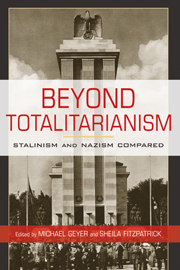3 - Utopian Biopolitics
Reproductive Policies, Gender Roles, and Sexuality in Nazi Germany and the Soviet Union
Published online by Cambridge University Press: 05 June 2012
Summary
Reproduction was a matter of extreme importance to Nazi and Soviet leaders, and for this reason alone their reproductive policies merit close scholarly attention. But Nazi and Soviet attempts to manage reproduction are also significant in what they reveal about their leaders' respective visions of how to transform populations and shape societies. As was true of governments throughout interwar Europe, the Nazi and Soviet regimes assumed that the state could and should regulate reproduction. Particularly given the need for a large population in an age of mass warfare, virtually every country in Europe enacted pronatalist policies. But within this common rubric of state management of reproduction, Nazi Germany and the Soviet Union pursued very different reproductive policies – policies that reflected stark ideological, structural, and disciplinary differences between the two countries. Each regime sought to transform society, reshape social bonds, and rewrite the social contract along fundamentally illiberal yet modernist lines. Individual liberties were rejected in favor of two quite different collectivist projects: the establishment of a racially defined Volksgemeinschaft to provide social support for the hegemony of the “Aryan” master race over Europe and the world and the much more universalist project of creating a classless, socialist society to serve as the model for the emancipation of humanity as a whole. Both of these agendas called for individual citizens to view reproductive and sexual choices in terms of service to the state.
- Type
- Chapter
- Information
- Beyond TotalitarianismStalinism and Nazism Compared, pp. 87 - 130Publisher: Cambridge University PressPrint publication year: 2008
References
- 2
- Cited by



